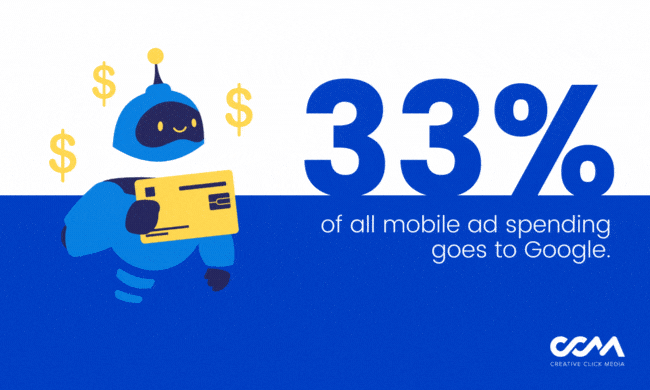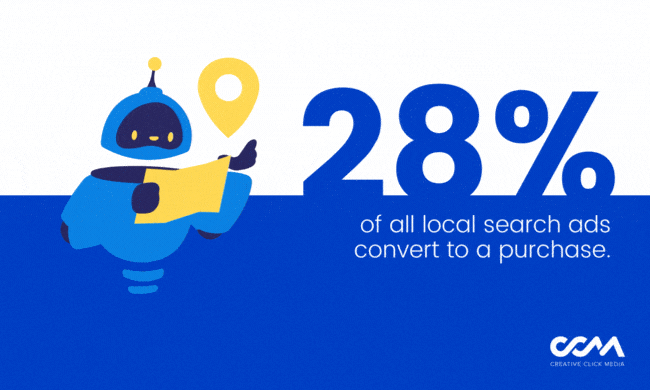You’re probably here to find out why your Google Ads aren’t converting, but first you’re going to bake a loaf of bread! You spent hours scouring the internet for the perfect recipe, made a special trip to the grocery store to get the ingredients, nurtured your dough for days, popped it in the oven and waited patiently for that perfectly golden-brown crust to rise.
But there’s one problem. Your dough never rose.
Instead of the fluffy, delicious loaf you’ve been dreaming of, your bread is a sad, flat lump of disappointment. What happened?
An unsuccessful Google Ad campaign can feel a lot like a failed loaf of bread. You spent hours crafting your ad copy, agonizing over the perfect targeting and bidding strategy—all to be met with little to no conversions. It can be especially disheartening if you’ve been running your ads for some time now, but have yet to see any real returns on your investment.
Fortunately, unlike a failed loaf of bread, there are steps you can take to turn your lackluster Google Ads campaign from a flop into a success. Here are 10 common reasons why your Google Ads are not converting and how to fix them:
1) Your Conversion Tracking Isn’t Working
Sometimes the problem with Google Ads isn’t that they’re not converting—it’s that you can’t tell if they are or not. If your conversion tracking isn’t working, there’s no way to know if your ads are performing the way they should. This possibility might not ever occur to you if you have been able to see conversion data in the past, but there is always a chance that a glitch could have occurred that is preventing you from receiving the real-time feedback you need to adjust your campaigns accordingly.
How to Fix It: The best place to start is by checking to see that your Google Ads account’s conversion tracking is configured properly. If everything looks to be in order, then it could be a good idea to check the tracking settings on your website and make sure they are compatible with Google Ads. If this still isn’t working, you can reach out to Google Ads support or enlist the help of an experienced PPC specialist who can troubleshoot it for you.
2) Your Ad Copy Isn’t Compelling
You can have the best targeting and bidding strategy in the world, but if your ad copy isn’t compelling enough to draw people in, no one is going to click on it. You need to make sure that you’re using clear, concise copy that emphasizes why someone should choose your product or service rather than any other. Think about it this way: if you were the customer, what would make you click?
How to Fix It: Before you launch your ads, take a step back and read them with a critical eye. Think about how you can make your copywriting more persuasive and adjust accordingly. Are you using active verbs and language that emphasizes the value of your product? Are you speaking to your target audience and their needs in a clear, concise way? If not, it may be time to tweak your ad copy and test it out. You might also consider running an A/B test to compare two versions of the same ad and see which performs better.
3) You Haven’t Optimized Your Landing Pages
You’ve crafted the perfect ad, now it’s time to make sure your landing pages are optimized to turn those clicks into conversions. Your landing page should be designed to give people the information they need to make an informed decision about your product or service. If it’s too cluttered, or if visitors have to go through too many steps before submitting a purchase, you’re likely losing conversions.
How to Fix It: Start by conducting a thorough audit of your landing page. Is the messaging consistent with the ad that brought people to the page? Does it load quickly? Are there any distractions that could be drawing people away from the call to action? If you identify any areas for improvement, make sure to address them as soon as possible. Much like with ad copy, you may also want to consider A/B testing different versions of your landing page to see which one performs best with your audience.
4) You’re Not Utilizing Negative Keywords
A negative keyword is a type of keyword that prevents your ad from being triggered by certain search queries. This is important because it helps you narrow down the scope of your campaigns and make sure your ad is only being shown to people who are actually interested in what you have to offer. For example, if you’re a plumbing company, you might set the phrase ‘DIY’ as a negative keyword so that your ad doesn’t show up when people are searching for instructions on how to fix a leaky pipe. Those searchers are unlikely to become customers, so it makes sense to preserve your ad budget by excluding them.
How to Fix It: Take some time to research the keywords that are being used to trigger your ads. Are there any queries you don’t want your ad to show up for? Make sure to add them as negative keywords to ensure your ad budget is being used efficiently. Additionally, make sure you’re constantly monitoring the performance of your campaigns and adding new negative keywords as needed.
5) You Don’t Have an Ad Retargeting Strategy
Ad retargeting, also known as remarketing, is a powerful tool that allows you to keep your brand top-of-mind with people who have already visited your website. This can be especially useful for products or services that require research and deliberation before making a purchase. By keeping your brand in front of them, you can increase the likelihood that they’ll come back and convert.
How to Fix It: To get started with retargeting, make sure you have a tool like Google Ads or Facebook Ads set up so that you can track visitors and start building an audience. Once you’ve set up tracking, you can create ads that specifically target people who have already visited your site. These ads should include messaging that speaks to their original search query and emphasizes the value of your product or service. As with other aspects of your ad campaigns, make sure to test different versions to see which one performs best with your audience. By investing in an effective retargeting strategy, you can make sure that your ad budget is working hard to bring in valuable leads.
6) You’re Not Optimizing Your Bids
Bid optimization is an important part of running successful ad campaigns. It involves making sure that you’re bidding the right amount for each keyword or audience so that your ads are shown to the right people, at the right time. This can be tricky because different keywords have different levels of competition, meaning they require different amounts of money to reach the top spot.
How to Fix It: Start by researching your target keywords and audiences to determine how competitive they are. Once you know that information, you can adjust your bids accordingly so that your ads show up in the right places at the right times. Additionally, consider taking advantage of automated bidding strategies like Google’s Enhanced Cost Per Click, which can help you reach your desired results with minimal effort. By optimizing your bids, you can make sure that you’re getting the most out of your ad budget.
7) You’re Not Testing Different Ad Variations
Running ads that aren’t compelling to your target customer base is one of the most common reasons for your ads not converting. Testing different variations of your ads can help you determine the most effective way to reach your ideal clientele. It’s important to test different messages, images, and calls-to-action to find out which ones resonate best with each of your target audiences. This can help you refine your messaging and make sure that you’re getting the most out of each ad budget.
How to Fix It: First, create multiple versions of each ad, using different messages and visuals. Then, set up an A/B test so that you can compare the performance of each variation and determine which one works best. Keep in mind that it might take a few rounds of testing before you find the winning combination, but this process is essential to ensure that you’re getting the most out of your ad campaigns. With the right tests and adjustments, you can make sure that each dollar spent on your ads is well worth it.
8) Your Mobile Ads Aren’t Optimized
Did you know 33% of all mobile ad spending goes to Google? It’s no secret that mobile ads are becoming increasingly important in the digital marketing world, but what many don’t realize is that simply running ads on a mobile platform isn’t enough. You need to make sure that your ads are optimized for mobile devices in order to maximize your return on investment. This means creating ad copy that speaks directly to users who are scrolling through their phones, as well as using images and videos that are optimized for mobile screens.
How to Fix It: Start by analyzing your current mobile ad performance. If you’re not seeing the results that you’d like, consider adjusting the messaging of your ads to make sure they are tailored for a mobile audience. Additionally, make sure that any images and videos you use in your ads are optimized for smaller screens that are viewed in primarily a vertical orientation. Finally, take advantage of mobile-specific features like click-to-call and location targeting to ensure that you’re reaching the right people with your messages. With these steps, you can make sure that your mobile ad campaigns are working hard to bring in valuable leads.
9) You’re Not Monitoring Your Ad Performance
It’s important to remember that running successful ad campaigns is a continuous process, not a one-time event. This means that you need to constantly be monitoring your ads and making adjustments based on the data you’re seeing. What worked a month ago may not work today, so it’s important to stay on top of the changes in order to ensure that your ads are driving conversions. Neglecting to monitor your performance can be a costly mistake, as you could be wasting time and money on ineffective ads that don’t drive conversions.
How to Fix It: Set up tracking so that you can continually review the performance of each ad campaign. Make sure that you track both short-term and long-term performance so that you can get a sense of overall trends. Then, use these insights to make adjustments to your ad campaigns as needed. Pay attention to the metrics relevant to your objectives (such as conversions, impressions, or click-through rate), and make changes accordingly. With ongoing monitoring, you can make sure that your ads are always helping to drive your bottom line.
10) You Aren’t Utilizing Google Ad Extensions
Google ad extensions are a great way to add additional information and value to your ads. These tools allow you to include additional information about your business, such as contact information, product details, and offers. They can also help boost the visibility of your ads by making them stand out from the competition. By using relevant ad extensions, you can help ensure that your ads are seen and clicked on by the right people. Still, many businesses are not taking advantage of this powerful feature, costing them in potential conversions.
How to Fix It: Spend some time researching the various ad extensions available in Google Ad Tools and decide which ones are right for your business. Then, test different combinations of ad extensions to see which ones result in the highest click-through rate or conversions. You can also experiment with different placements within the ad copy to see if that has a positive impact on performance. With some trial and error, you can find the winning combination of ad extensions to help make your ads successful.
11) You Haven’t Optimized for Local Search
Local search ads are a great way to target customers in your area who may be looking for your products or services. By taking advantage of local SEO advertising, you can increase your visibility and reach a more focused audience that is likely to convert. In fact, 28% of local search ads convert to a purchase! Still, many business owners do not realize that local search ads are different from regular search ads and are not optimizing their campaigns accordingly. Not only do they require a different targeting strategy, but they also need to include specific information about the business’s location.
How to Fix It: Start by researching the local search ad options that are available. Then, make sure to include your business address and other relevant information in your ads so that they appear in local search results. Additionally, you’ll need to target your ads using specific locations and phrases that include the names of cities or towns. Utilize relevant ad extensions that include your business’s address, hours of operation, and contact information. With the right optimization strategy in place, you can ensure that your local search ads are reaching an audience of local consumers who are motivated to make a purchase in the near future.
12) You’re Not Testing Your Ads
Your ad may read well, utilize the right keywords and target the perfect audience, but without testing, you won’t know if it’s effective. Testing is a crucial part of any successful ad campaign, as it allows you to identify areas that can be improved and implement changes as needed. For instance, by testing different versions of your ad creative or targeting parameters, you can determine which ones yield the best results. Without testing, you may be missing out on a chance to make significant improvements to your campaigns and maximize their impact.
How to Fix It: Test out different ad variations, such as varying the headline, description, or landing page URL. Then experiment with different target audiences and geographic locations. By tracking user behavior and performance metrics, you can gain a better understanding of what’s working (or not working) in your ads. With a little bit of testing and tweaking, you can make sure that the ads you are running are the most likely to resonate with your target audiences.
Maximize Your Google Ad Conversions With a High-Yield Strategy
Much like your bread from earlier, running effective ad campaigns is something that takes patience, practice and potentially a few failed attempts. By understanding the common Google Ad pitfalls and taking steps to address them, you can improve your chances of success and ultimately generate better results from your digital marketing efforts. Pay attention to the details, monitor your ad campaigns regularly and take advantage of available features like ad extensions to ensure that your ads are working hard to bring in valuable leads.
That being said, your time is valuable and it’s understandable that you may not be able to devote the necessary resources to get to the bottom of why your Google Ads are not converting. Fortunately, that’s what our team is here for! Creative Click Media specializes in Google Ads strategy and implementation, and we can help your business create campaigns that drive results. Our experienced team of digital marketing professionals will routinely monitor and optimize your ad campaigns to ensure that you are getting the most out of your marketing budget. More clicks, higher rankings and a better ROI are only a click away – contact us to get started.






